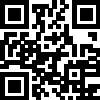хЎщхІц Ё06хЙДцшшБшЏх щЈшЕцтшПшНН(фИ)
яМ19яМ
Language as a System of Symbols
Of all systems of symbols(чЌІхЗ), language is the most highly developed. It has been pointed out that human beings, by agreement, can make anything stand for anything. Human beings have agreed, in the course of centuries of mutual(чИфКч)dependency, to let the various noises that they can produce with their lungs, throats, tongues, teeth, and lips systematically stand for certain happenings in their nervous systems. We call that system of agreements language.
There is no necessary connection between the symbol and that which it stands for. Just as social positions can be symbolized by feathers worn on the head, by gold on the watch chain, or by a thousand other things according to the culture we live in, so the fact of being hungry can be symbolized by a thousand different noises according to the culture we live in.
However obvious these facts may appear at first glance, they are actually not so obvious as they seem except when we take special pains to think about the subject. Symbols and the things they stand for are independent of each other, yet we all have a way of feeling as if, and sometimes acting as if, there were necessary connections. For example, there are people who feel that foreign languages are unreasonable by nature; foreigners have such funny names for things, and why canчЃ they call things by their right names? This feeling exhibits itself most strongly in those English and American tourists who seem to believe that they can make the natives of any country understand English if they shout loud enough. Like the little boy who is reported to have said: тPigs are called pigs because they are such dirty animals,т they feel that the symbol is inherently(х хЈхА) connected in some way with the things symbolized.
1. Language is a highly developed system of symbols because human beings ______.
A. have made use of language for centuries
B. use our nervous systems to support language
C. have made various noises stand for any events
D. can make anything stand for anything by agreement
2. What can we conclude from Paragraph 2?
A. Different noises may mean different things.
B. Our culture determines what a symbol stands for.
C. The language we use symbolizes our social positions.
D. Our social positions determine the way we are dressed.
3. In Paragraph 3, тtake special painsт probably means т_____т.
A. try very hardB. take our timeC. are very unhappyD. feel especially painful
4. The example of the little boy is used to show that _____.
A. adults often learn from their young B. тpigт is a dirty word because pigs are dirty
C. words are not connected with the things they stand for
D. people sometimes have wrong ideas about how language works
яМ20яМ
Jane Austen, a famous English writer, was born at Steventon, Hampshire, on December 16,1775, and died on July 18, 1817. She began writing early in life, although the prejudices of her times forced her to have her books published anonymously ( хПх ).
But Jane Austen is perhaps the best known and best loved of BathчЃ many famous local people and visitors. She paid two long visits here during the last five years of the eighteenth century and from 1801 to 1806, Bath was her home. Her deep knowledge of the city is fully seen in two of her novels, Northanger Abbey and Persuasion, which are largely set in Bath. The city is still very much as Jane Austen knew it, keeping in its streets and public buildings the well-ordered world that she described so well in her novels. Now the pleasure of learning Jane AustenчЃ Bath can be enhanced (хЂхМК)by visiting the Jane Austen Center in Gay Street. Here, in a Georgian town house in the heart of the city, you can find out more about Bath in Jane AustenчЃ time and the importance of Bath in her life and work.
The Center has been set up with the help and guidance of members of the Jane Austen Society. After your visit to the Center, you can look round the attractive shop, which offers a huge collection of Jane Austen related books, cards and many specially designed gifts. Jane Austen quizzes are offered to keep the children busy.
You can also have walking tours of Jane AustenчЃ Bath, which is a great way to find out moreabout Jane Austen and discover the wonderful Georgian city of Bath. The tour lasts about one and a half hours. The experienced guides will take you to the places where Jane lived, walked andshopped.
1. Jane Austen paid two long visits to Bath________.
A. in her early twentiesB. in her early teens
C. in her late twentiesD. in her late teens
2. What can we learn about Bath from the passage?
A. Bath has greatly changed since Jane AustenчЃ death.
B. The city has changed as much as Jane Austen knew it.
C. Bath remains almost the same as in Jane AustenчЃ time.
D. No changes have taken place in Bath since Jane AustenчЃ time.
3.The author writes this passage in order to________.
A. attract readers to visit the city of Bath
B. ask readers to buy AustenчЃ books
C. tell readers about Jane AustenчЃ experience
D. give a brief introduction to the Jane Austen Society
4. It takes you about one and a half hours________.
A. to get to the JaneAustenCenter in Gay Street
B. to buy Jane Austen related books, cards and gifts
C. to find a guide to take you to the Center
D. to look around the city of Bath on foot
чИх ГцЈш
- 2017хЙДцфККщЋшфИхцЌшБшЏшшЏцЈЁцшЏщЂхчцЁфК03-22
- 2017хЙДцфККщЋшфИхцЌшБшЏшшЏцЈЁцшЏщЂхчцЁфИ03-22
- 2016хЙДцшфИхцЌшБшЏшххВхКшЏщЂхчцЁцБцЛ10-28
- 2016цшфИхцЌшБшЏхЄшшЏщЂхчцЁ14хЅ08-25
- 2016хЙДцфККщЋшфИхцЌшБшЏцЈЁцшЏщЂхчцЁ6хЅ08-04
| ПЮГЬзЈвЕУћГЦ | НВЪІ | дМл/гХЛнМл | УтЗбЬхбщ | БЈУћ |
|---|---|---|---|---|
| гяЮФ(ИпЦ№Еу)ОЋНВАр | ЕЫО§УФ | ЃЄ150 / ЃЄ150 |  |
БЈУћ |
| гЂгя(ИпЦ№Еу)ОЋНВАр | Monica | ЃЄ150 / ЃЄ150 |  |
БЈУћ |
| Ъ§бЇ(ЮФ)ОЋНВАр | ЭѕЗМ | ЃЄ150 / ЃЄ150 |  |
БЈУћ |
| Ъ§бЇ(Рэ)ОЋНВАр | ТогзжЅ | ЃЄ150 / ЃЄ150 |  |
БЈУћ |
| ДѓбЇгяЮФ(зЈЩ§БО)ОЋНВАр | ХЗбєАиСи | ЃЄ150 / ЃЄ150 |  |
БЈУћ |
| гЂгя(зЈЩ§БО)ОЋНВАр | Monica | ЃЄ150 / ЃЄ150 |  |
БЈУћ |
| ИпЕШЪ§бЇ(вЛ)(зЈЩ§БО)ОЋНВАр | ЭѕЬЮ | ЃЄ150 / ЃЄ150 |  |
БЈУћ |
| ИпЕШЪ§бЇ(Жў)(зЈЩ§БО)ОЋНВАр | ТогзжЅ | ЃЄ150 / ЃЄ150 |  |
БЈУћ |
ИЈЕМПЮГЬ
- ИпЦ№Еу-Ъ§бЇ(ЮФЪЗВЦОРр)

- ЭѕЗМРЯЪІ
 УтЗбЪдЬ§
УтЗбЪдЬ§
- ИпЦ№Еу-гЂгя

- MonicaРЯЪІ
 УтЗбЪдЬ§
УтЗбЪдЬ§
- зЈЩ§БО-ДѓбЇгяЮФ

- ХЗбєАиСиРЯЪІ
 УтЗбЪдЬ§
УтЗбЪдЬ§
АрМЖНщЩм
ЬзВЭАќКЌЃКзЈЩ§БОVIPАр/ИпЦ№ЕуVIPАрЃЈКЌОЋНВ+ецЬтНтЮі+ФЃПМЕуЬт)
ЬзВЭгХЪЦЃК1ЁЂЫјЖЈКЫаФПМЕу
2ЁЂПМЧАЗЂЗХ2ЬзЪдЬт
3ЁЂУтЗбжибЇвЛДЮБЃеЯ
ХфЬзЗўЮёЃК1ЁЂУтЗбЬтПт
2ЁЂПЮГЬНВвх+ПЮМўЯТди+вЦЖЏПЮЬУ







 УтЗбЪдЬ§
УтЗбЪдЬ§ 




